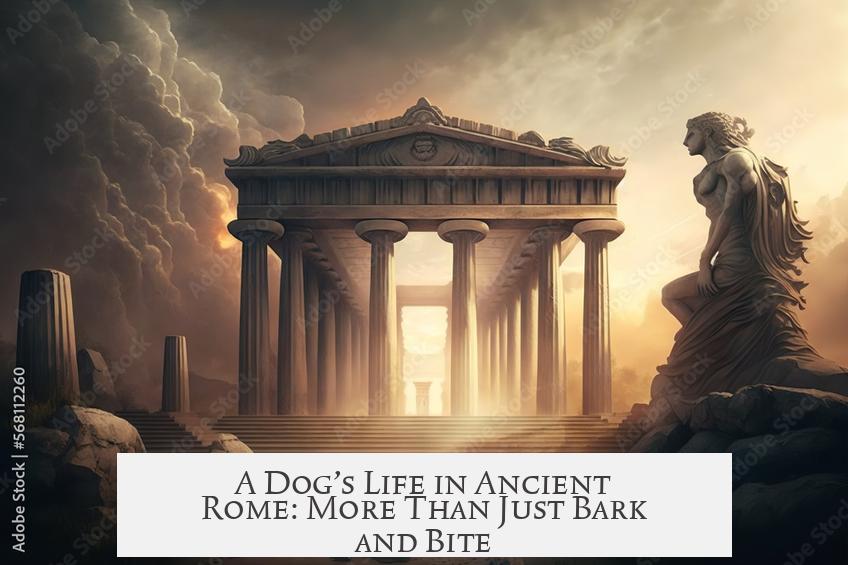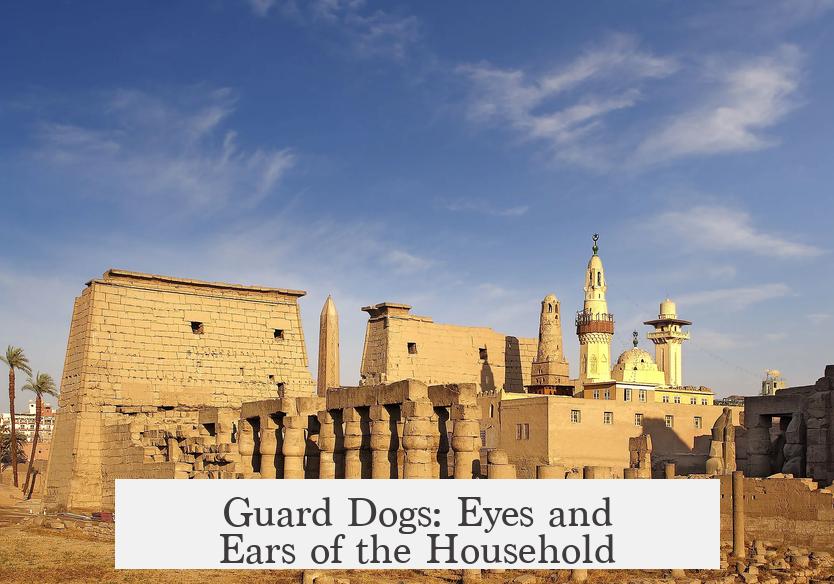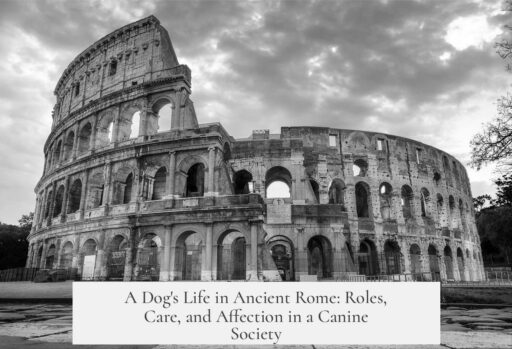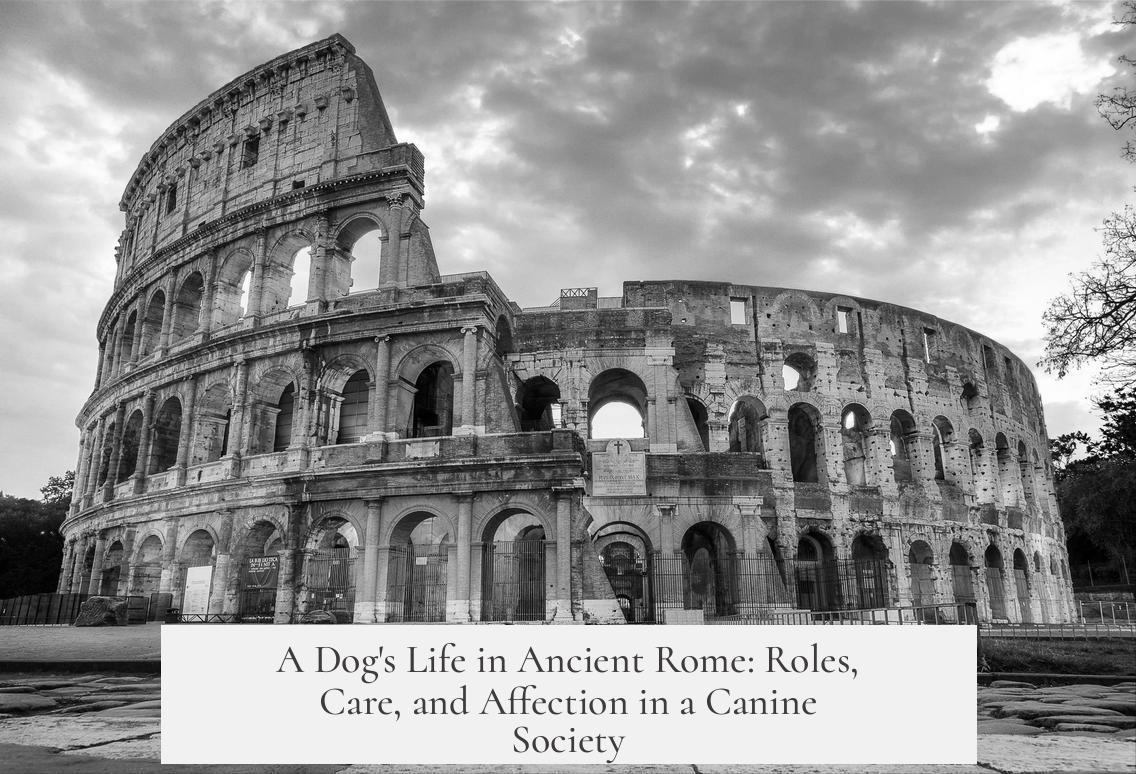A dog’s life in Ancient Rome reflects diverse roles and treatment, deeply intertwined with Roman society and culture. Dogs enjoyed generally positive regard across social strata, serving practical, symbolic, and companion purposes. Roman writings and art celebrate dogs, with evidence of affectionate bonds between dogs and their owners visible in funerary practices, epitaphs, and literature.
Roman dogs’ experiences varied widely by breed, status, and function within the household or community.
- Hunting Dogs: These dogs, including large mastiffs, were vital in pursuing game animals like boar. Romans housed them in kennels, ensuring they had time outdoors to exercise and relieve themselves. Their diet was carefully managed, typically including wheat bread, bean porridge, oatmeal with oil, organ meats, and bones, aimed at maintaining tooth health as recommended by the writer Varro.
- Mastiffs sometimes wore studded collars to protect against wolf attacks. Greyhounds (vertragus), imported primarily from Celtic regions such as Ireland and restricted to wealthy Romans, exemplified status symbols. Arrian’s treatise on hare coursing emphasizes positive reinforcement training for greyhounds, highlighting a method still admired today. Greyhounds were often housed indoors with warm bedding, allowed playtime multiple times daily, and dressed warmly in cold weather, evidencing exceptional care and status.
- Guard Dogs: These dogs were prized for size and a deep bark, traits suited to protecting property. Daytime restraint through leashes or chains, often in the home’s atrium, contrasted with free nighttime roaming for security. Black guard dogs appeared frequently in mosaics like the “Cave canem” (Beware of the dog) panels, associated with stealth and intimidation. In contrast, Varro recommended light-colored dogs for visibility and deterrence at night.
- Guard dog collars ranged from sturdy leather with metal studs to ornamental collars of gold, reflecting both practical and decorative uses. These collars offered protection and signified the dog’s importance.
- Sheep-Guardian Dogs: Large white dogs, comparable to modern Maremmanos or Pyrenean Mountain Dogs, guarded flocks in rural settings. Roman agricultural writer Columella stated that securing one was essential when establishing a new farmstead, highlighting their critical role in livestock protection.
- These dogs lived with the sheep full-time, warding off predators like wolves. Shepherds sometimes equipped them with spiked leather collars for additional protection during attacks.
- Toy and Pet Dogs: Smaller breeds served primarily as companions, often associated with women. They lived privileged lifestyles, granted access throughout households, including furniture and owners’ laps. Ancient authors like Seneca and Juvenal commented on their free reign within homes.
- A typical diet for toy dogs consisted mostly of human food, often fed directly from dining tables. They commonly wore delicate metal collars embellished with bells as accessories. Breeds such as the Maltese emerged during this period, becoming popular pets. Italian Greyhounds, a hybrid of greyhounds and toy dogs, were favored for combining size distinction and convenience.
- There was also a widespread belief that small dogs provided medicinal benefits by cuddling with sick individuals, aiding recovery through close physical contact.
Health-wise, analysis of canine remains from Roman times indicates these dogs generally enjoyed good physical condition, with no significant signs of abuse. Dental and skeletal health appeared comparable to that of modern pet dogs. This suggests that owners maintained attentive care, ensuring their animals lived comfortable, often pampered lives.
Overall, dogs in Ancient Rome served multiple functions. They acted as hunters, guards, livestock protectors, and companions. Their treatment depended on their roles and owners’ social status but often included thoughtful care with specialized diets, clothing, and housing. The prominent status of dogs in Roman culture is evident from literature, art, and archaeological findings, reflecting affection and respect for these animals.
| Dog Type | Role | Care and Lifestyle | Special Features |
|---|---|---|---|
| Mastiffs | Hunting large game | Kept in kennels, fed twice daily (bread, porridge, organ meat) | Spiked collars for protection |
| Greyhounds (Vertragus) | Hunting and status symbol | Indoor resting, warm bedding, daily exercise | Soft broad leather collars, clothing and booties for cold |
| Guard Dogs | Property protection | Leashed/Chained by day, free at night | Studded leather or metal collars, varied coat color preferences |
| Sheep-Guardian Dogs | Protect livestock | Live with flock full-time | Spiked collars to deter predators |
| Toy/Pet Dogs | Companionship | Allowed indoors, fed human food, pampered | Delicate collars with bells, medicinal beliefs |
- Romans valued dogs across social classes and roles.
- Dogs received specific diets and care tailored to their use.
- Roman dogs’ health was comparable to modern pet dogs.
- Affectionate bonds were evident in burial and daily life.
- Dogs served hunting, guarding, herding, and companionship functions.
A Dog’s Life in Ancient Rome: More Than Just Bark and Bite

Ever wonder what a dog’s life was like in Ancient Rome? Well, it’s not all gladiators and togas—dogs held a special place in Roman society that went far beyond fetching sticks. Dogs in Ancient Rome enjoyed varied roles and surprisingly good lives, whether they were hunting, guarding, or simply lounging on marble floors like the pampered pets we adore today.
Let’s dive into this fascinating world where ancient canines were more than just accessories or watchdogs—they were companions, status symbols, and even stars in art and literature.
Romans Loved Their Dogs: A Society with Heart
Romans viewed dogs quite positively. Not just some casual pet ownership here—writers like Cicero and Pliny the Elder sang praises about dogs of all kinds. Their influence stretches across social classes, reflected widely in art, religion, and literature.
Fancy having your dog’s epitaph carved? Romans did. Dogs got proper funerals, complete with gravestones that memorialized their owners’ affection. That’s puppy love taken to an ancient extreme.
From archaeological studies, these dogs were generally healthy, with little evidence of abuse or disease. Just like modern pups, they enjoyed good dental health and didn’t suffer from neglect. Sounds like Roman dog owners took pet care seriously.
But beware—their daily lives weren’t cookie-cutter. A dog’s experience depended heavily on breed, owner’s wealth, and location. Hunting hounds had a very different routine compared to delicate lap dogs.
Hunting Dogs: Fierce and Well-Tended
Hunting dogs lived active, disciplined days. Usually kept in kennels by day, they got regular breaks for exercise. Think of it as a “paw-lease” for fresh air and leg-stretching.
Mastiffs, the big game hunters, especially stood out. These dogs hunted boars and other large prey, boasting diets richer than your average Roman feast—wheat bread, bean porridge, oatmeal, supplemented with oil, organ meats, and bones. Verro, a Roman writer on agriculture, even recommended these foods to strengthen their teeth. Who knew ancient dogs had dentists?
Protection was critical. Mastiffs sometimes wore studded or spiked collars to defend themselves from wolf attacks. Imagine that—doggie armor designed to ward off wolves.
Now, greyhounds, or “vertragus,” belonged to the elite. Importing these dogs from far Celtic tribes, even Ireland, made them rare and prestigious. Owner status soared with possession of a sleek greyhound.
Arrian’s treatise “On Coursing Hares” reveals the gentler side of Roman dog training. He advised praising your greyhound with pats post-hunt, highlighting a timeless truth: dogs love praise, no matter the century.
Greyhounds chilled in warm beds indoors and went outside to play with their pals a few times daily. When cold, they donned colorful coats and even leather booties. Fancy footwear for pooches? Ancient Romans nailed dog fashion.
The diet? Once daily, a grain and fat mix, plus meat, fish, and eggs. Meanwhile, their collars resembled today’s Martingale style—soft, broad leather, designed for comfort and control.
Guard Dogs: Eyes and Ears of the Household

Guard dogs had a job: keep the property safe. During the day, they stayed leashed or chained, often lounging in the atrium—the heart of the Roman home. At night, they patrolled freely, a silent sentry against intruders.
Size and bark mattered—a large dog with a deep, booming bark was prized. Romans favored black dogs in the “Cave Canem” mosaics because darkness helped dogs lurk stealthily. Yet Verro preferred light-colored guard dogs—better visual warnings for nighttime trespassers. Conflicting advice or personal preference, either way, dogs were a crucial deterrent.
Their collars sometimes went fancy, too. Metal-studded leather collars were common, but Pliny even described dogs sporting collars made of gold. Imagine a blinged-out guard dog flashing some serious Roman swagger.
Sheep-Guardian Dogs: Protectors of the Flock
Romans in the countryside relied on large, white sheep-guardian dogs, akin to today’s Maremmano or Pyrenean Mountain Dogs. These dogs were essential to farm life. Columella, a Roman agricultural writer, said getting such a dog was the first task when setting up a household—talk about job priority.
These dogs lived with the sheep constantly, warding off predators and ensuring the flock’s safety. They weren’t just pets; they were farm security.
To protect these fearless guardians from wolf attacks, shepherds sometimes equipped them with leather collars spiked with nails. Functional, if not fashionable, these collars kept Roman farm dogs battle-ready.
Toy and Pet Dogs: Pampered Little Royals of Rome
Now for the lapdogs and toy breeds, the social butterflies of Roman dogdom. These tiny companions were mostly owned by women, and their pampering knew no bounds.
Seneca and Juvenal grumbled about the indulgent lifestyles of these small dogs—they climbed on furniture, cuddled into guests’ laps, and shared human beds. No dedicated doggy dormitories here; these pups loved luxury firsthand.
Their diets? Human food, straight from the table while comfortably perched on their owner’s lap. Bone broth? Nah, how about fine Roman cuisine?
Collars tended to be delicate metal pieces, sometimes adorned with tiny bells jingling as the dog pranced around. Pretty chic for ancient bling.
Maltese dogs became popular then, forming part of the breed legacy we see today. Italian Greyhounds, a hybrid between greyhounds and the toy breeds, combined agility and style, making them hot commodities for status-conscious Romans.
Here’s a curious tidbit: Romans believed small dogs could help sick folks heal. A pet curled on the patient’s body could ease ailments. Could modern therapy dogs owe their roots to this ancient belief?
Conclusion: Did Ancient Roman Dogs Have It Good?
Overall, the average Roman dog, especially pampered pets and prized hunting hounds, lived a healthy and often luxurious life. In many ways, their care rivals that of modern dogs—the pampering, health, and bonds with humans traveled through millennia unchanged. Ancient Romans didn’t just keep dogs for utility or prestige—they loved and valued them deeply.
So, next time you toss a ball for your dog or pat it praise after a trick, remember the thousands of years of friendship that lead you there. Dogs in Ancient Rome weren’t just guards or hunters; they were family. And apparently, family meant dinners, comfy beds, fashion, and sometimes, even funerals.
Could the Romans be barking up the right tree about spoiling their dogs? It sure seems like they knew the secret to a dog’s heart was simply to treat them well, no matter their breed or job.
What roles did different dog breeds play in Ancient Rome?
Dogs served varied purposes. Mastiffs hunted large game. Greyhounds were prized status symbols. Guard dogs protected homes, sheep dogs guarded flocks, and toy dogs served as companions.
How were hunting dogs like mastiffs cared for in Ancient Rome?
Mastiffs were kept in kennels, exercised regularly, and fed wheat bread with meat and bones. Some wore spiked collars for protection from wolves.
Why were greyhounds highly valued by wealthy Romans?
Greyhounds were imported from Celtic lands, making them rare. They symbolized status, received special indoor care, soft collars, and were trained with praise and treats.
How did guard dogs contribute to Roman household security?
Guard dogs were chained in the house during the day and roamed at night. Their loud bark and often dark color helped deter intruders.
What was special about the care of toy dogs in Roman society?
Toy dogs were pampered pets often kept indoors, fed “people food,” and wore decorated collars. They sometimes slept on furniture and were believed to aid healing by cuddling the sick.
How did sheep-guardian dogs protect rural Roman farms?
Sheep dogs lived with flocks full-time to guard them. They wore spiked collars to defend against wolves. Farmers saw them as essential for protecting livestock.




